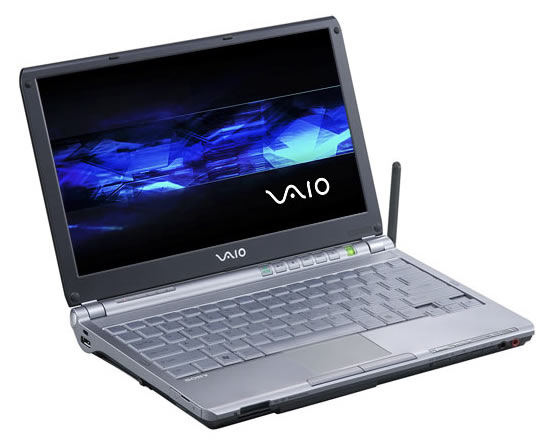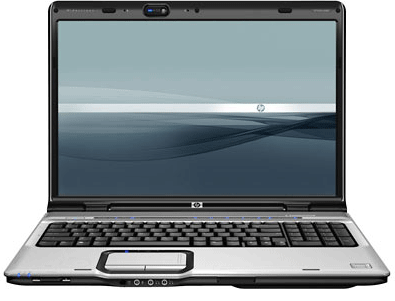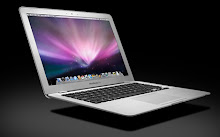
The Lenovo IdeaPad U150 is an 11-inch notebook featuring the latest Intel CULV processors for extreme battery life combined with HDMI output for mobile entertainment. This attractive netbook alternative packs enough performance for everyday tasks yet is small enough to be your constant companion PC. Should you spend your next $750 on this impressive little laptop? Keep reading to find out.
BUY the IdeaPad U150 Laptop Computer - 690968U - Red - Intel Pentium- Dual-Core SU4100
LENOVO $649.00
see all pricing for the IdeaPad U150 Laptop Computer - 690968U - Red - Intel Pentium- Dual-Core SU4100
Our Lenovo IdeaPad U150 Specifications:
Windows 7 Home Premium 64-bit
Intel Core 2 Duo SU7300 Processor (1.30GHz, 800MHz FSB, 3MB L2 cache)
4GB DDR3 SDRAM (1066MHz)
320GB 5400 rpm SATA HDD
11.6-inch diagonal WXGA (glossy, 1366x768)
Intel X4500M integrated graphics
Intel 5100AGN, Bluetooth 2.1 + EDR
Dimensions: (LxWxH) 11.4 x 7.5 x 0.5-1.35 inches
Weight: 2.97 lbs. (not including weight of AC adapter)
6-cell 57Wh battery
One-year standard warranty
MSRP: $749 (configurations starting at $649 at Lenovo.com)
Build and DesignLenovo is best known for the ThinkPad line of business notebooks that the company inherited from IBM, but the new IdeaPad line of consumer-oriented laptops has managed to generate some buzz thanks to unique designs and a modest price. The Lenovo IdeaPad U150 continues that trend by offering an attractive 11-inch notebook that rivals the Dell Inspiron 11z and the HP Mini 311. Like most 11-inch notebooks currently on the market, the U150 walks the fine line between a full-featured notebook PC and an Intel Atom-based netbook. The U150 is larger and more powerful than the typical $400 netbook, but lacks the impressive features and size of a standard laptop with a high-end Core 2 Duo processor in the $650-$900 price range. That said, the U150 certainly offers an attractive design with a combination of matte black, glossy black, and glossy silver plastics.
The lid of the U150 features the same cross-weave texture imprint seen on the larger IdeaPad U350 and it's a nice alternative to the glossy lids seen on most 11-inch notebooks. Build quality is acceptable thanks to a solid bottom half of the chassis, but the plastic screen lid with thin metal texture panel and plastic palmrests suffer from a bit more flex than we like to see in notebooks that cost more than $600. Granted, most consumers probably won't notice the flex in the plastic exterior unless they apply significant pressure to the palmrests or the screen, but 11-inch notebooks are usually carried inside backpacks with heavy school books ... so we'd like the U150 to be a bit more solid. On the other hand, the textured matte lid (again, a combination of plastic and thin metal) not only looks nice, but hides day-to-day abuse by making scratches blend in with the imprinted pattern. It also does a very good job at hiding smudges and fingerprints compared to laptops with glossy plastic exteriors. The IdeaPad U150 will probably hold up quite well to typical user abuse ... but you certainly don't want to try standing on this laptop.
People who like to upgrade their laptops with aftermarket parts (extra RAM, a new hard drive or SSD, or a new wireless card) will find the U150 is extremely easy to upgrade. One panel provides access to the hard drive and RAM while a second panel gives you access to the wireless card and mini PCI-E card slot. We couldn't find any explicit "warranty void if removed" stickers inside the notebook, but there were some Lenovo-branded stickers covering the edges of the RAM, Wi-Fi card, and heatsink screws which may be used to indicate tampering.
Screen and SpeakersThe 11.6" screen on the U150 is average, providing decent color and contrast but suffering from noticeably shallow viewing angles. Most thin-and-light notebooks come with low-quality TN display panels, but this display produces somewhat "pastel" colors using our test image. For standard activities like browsing the web or typing documents you don't really notice the color shift, but when viewing pictures or watching a dark movie the softer colors are a bit distracting. Vertical viewing angles are good until about 10 degrees forward or back when colors start to show visible shift. Horizontal viewing angles are a little better as colors remain essentially unchanged except at very steep angles. The screen backlight works very well under bright office lights, but the screen isn't quite powerful enough to overcome reflections off the glossy screen outdoors under direct sunlight.
The built-in stereo speakers are fine for listening to streaming radio or the occasional TV show, but lack much bass. Since the speakers are located at the bottom front edge of the notebook the audio output tends to sound muffled when you use the notebook as a "laptop." However, if the U150 is resting on a desk then the sound bounces up off the surface of the desk and toward the user. Still, headphones are a much better option to really enjoy music and movies from this notebook thanks to the weak bass and midrange from the built-in speakers. Another alternative is using the HDMI-out to pass digital audio to a home theater system.
Keyboard and TouchpadThe nearly full-size keyboard is great for typing and is about as good as you can expect on a notebook with an 11-inch chassis. The space bar is a little small and the tilde key has been shrunk to fit, but overall the keys feel like they are the size they should be. The editors in our office are evenly split between those of us who prefer the "Chiclet-style" keyboards that provide additional space between the keys and traditional keyboards like this one that offer larger keys. Honestly, keyboard preference is largely a matter of personal taste, so keep in mind that there are 11-inch notebooks with traditional keyboards and notebooks with Chiclet/island keys. The keyboard itself is quite firm and free of any flex even under heavy typing pressure. Each key emits a soft "click-clack" when pressed and isn't too disruptive for classroom typing. Key wiggle or travel is minimal and each key top is solidly attached to the scissor mechanism below. In short, the keyboard on the U150 is one of the nicer ones we've seen on an 11-inch notebook.
The IdeaPad U150 offers a reasonably large Synaptics touchpad and it's one of the nicer touchpads we've seen on an 11-inch notebook. The plastic surface texture is mildly rough and provides good traction without making it difficult to slide your finger across the surface. Speed and accuracy are great with the default settings and we didn't notice any cursor lag in our tests. Refresh rate of the touchpad surface is very good and prevents any "stutter" like what we've recently seen on a few Synaptics touchpads. The acceleration on each axis is adequately matched and helps guarantee that cursor movement on the screen matches your finger movement on the touchpad (unlike the touchpad on the Dell Inspiron 11z). The touchpad buttons are fantastic thanks to a perfectly deep, springy action with quiet "clicks" when pressed.
Ports and FeaturesPort selection is surprisingly good on the IdeaPad U150. You get VGA and HDMI-out, gigabit LAN, audio in/out, and an SDHC card slot, and three USB ports (two standard ports and one combo USB/eSATA). The eSATA port allows you to use much faster external hard drives with this notebook, and we're glad that Lenovo used a combo USB/eSATA port for those customers who need USB and don't use eSATA.
The front-mounted SDHC-slot is spring loaded, and unlike the card slot on the larger U350, this one allows the card to sit flush in the slot. When you fully insert a standard SDHC card into the slot it doesn't stick out. Don't expect to see a built-in optical drive in this notebook, so if you plan on reinstalling the OS or playing DVDs you will need to pick up an external USB optical drive. Multimedia keys are limited to a mute button and a direct access button to the Lenovo "OneKey" recovery software suite used for creating a system backup or recovering from a system crash.
BUY the IdeaPad U150 Laptop Computer - 690968U - Red - Intel Pentium- Dual-Core SU4100
LENOVO $649.00
see all pricing for the IdeaPad U150 Laptop Computer - 690968U - Red - Intel Pentium- Dual-Core SU4100
Our Lenovo IdeaPad U150 Specifications:
Windows 7 Home Premium 64-bit
Intel Core 2 Duo SU7300 Processor (1.30GHz, 800MHz FSB, 3MB L2 cache)
4GB DDR3 SDRAM (1066MHz)
320GB 5400 rpm SATA HDD
11.6-inch diagonal WXGA (glossy, 1366x768)
Intel X4500M integrated graphics
Intel 5100AGN, Bluetooth 2.1 + EDR
Dimensions: (LxWxH) 11.4 x 7.5 x 0.5-1.35 inches
Weight: 2.97 lbs. (not including weight of AC adapter)
6-cell 57Wh battery
One-year standard warranty
MSRP: $749 (configurations starting at $649 at Lenovo.com)
Build and DesignLenovo is best known for the ThinkPad line of business notebooks that the company inherited from IBM, but the new IdeaPad line of consumer-oriented laptops has managed to generate some buzz thanks to unique designs and a modest price. The Lenovo IdeaPad U150 continues that trend by offering an attractive 11-inch notebook that rivals the Dell Inspiron 11z and the HP Mini 311. Like most 11-inch notebooks currently on the market, the U150 walks the fine line between a full-featured notebook PC and an Intel Atom-based netbook. The U150 is larger and more powerful than the typical $400 netbook, but lacks the impressive features and size of a standard laptop with a high-end Core 2 Duo processor in the $650-$900 price range. That said, the U150 certainly offers an attractive design with a combination of matte black, glossy black, and glossy silver plastics.
The lid of the U150 features the same cross-weave texture imprint seen on the larger IdeaPad U350 and it's a nice alternative to the glossy lids seen on most 11-inch notebooks. Build quality is acceptable thanks to a solid bottom half of the chassis, but the plastic screen lid with thin metal texture panel and plastic palmrests suffer from a bit more flex than we like to see in notebooks that cost more than $600. Granted, most consumers probably won't notice the flex in the plastic exterior unless they apply significant pressure to the palmrests or the screen, but 11-inch notebooks are usually carried inside backpacks with heavy school books ... so we'd like the U150 to be a bit more solid. On the other hand, the textured matte lid (again, a combination of plastic and thin metal) not only looks nice, but hides day-to-day abuse by making scratches blend in with the imprinted pattern. It also does a very good job at hiding smudges and fingerprints compared to laptops with glossy plastic exteriors. The IdeaPad U150 will probably hold up quite well to typical user abuse ... but you certainly don't want to try standing on this laptop.
People who like to upgrade their laptops with aftermarket parts (extra RAM, a new hard drive or SSD, or a new wireless card) will find the U150 is extremely easy to upgrade. One panel provides access to the hard drive and RAM while a second panel gives you access to the wireless card and mini PCI-E card slot. We couldn't find any explicit "warranty void if removed" stickers inside the notebook, but there were some Lenovo-branded stickers covering the edges of the RAM, Wi-Fi card, and heatsink screws which may be used to indicate tampering.
Screen and SpeakersThe 11.6" screen on the U150 is average, providing decent color and contrast but suffering from noticeably shallow viewing angles. Most thin-and-light notebooks come with low-quality TN display panels, but this display produces somewhat "pastel" colors using our test image. For standard activities like browsing the web or typing documents you don't really notice the color shift, but when viewing pictures or watching a dark movie the softer colors are a bit distracting. Vertical viewing angles are good until about 10 degrees forward or back when colors start to show visible shift. Horizontal viewing angles are a little better as colors remain essentially unchanged except at very steep angles. The screen backlight works very well under bright office lights, but the screen isn't quite powerful enough to overcome reflections off the glossy screen outdoors under direct sunlight.
The built-in stereo speakers are fine for listening to streaming radio or the occasional TV show, but lack much bass. Since the speakers are located at the bottom front edge of the notebook the audio output tends to sound muffled when you use the notebook as a "laptop." However, if the U150 is resting on a desk then the sound bounces up off the surface of the desk and toward the user. Still, headphones are a much better option to really enjoy music and movies from this notebook thanks to the weak bass and midrange from the built-in speakers. Another alternative is using the HDMI-out to pass digital audio to a home theater system.
Keyboard and TouchpadThe nearly full-size keyboard is great for typing and is about as good as you can expect on a notebook with an 11-inch chassis. The space bar is a little small and the tilde key has been shrunk to fit, but overall the keys feel like they are the size they should be. The editors in our office are evenly split between those of us who prefer the "Chiclet-style" keyboards that provide additional space between the keys and traditional keyboards like this one that offer larger keys. Honestly, keyboard preference is largely a matter of personal taste, so keep in mind that there are 11-inch notebooks with traditional keyboards and notebooks with Chiclet/island keys. The keyboard itself is quite firm and free of any flex even under heavy typing pressure. Each key emits a soft "click-clack" when pressed and isn't too disruptive for classroom typing. Key wiggle or travel is minimal and each key top is solidly attached to the scissor mechanism below. In short, the keyboard on the U150 is one of the nicer ones we've seen on an 11-inch notebook.
The IdeaPad U150 offers a reasonably large Synaptics touchpad and it's one of the nicer touchpads we've seen on an 11-inch notebook. The plastic surface texture is mildly rough and provides good traction without making it difficult to slide your finger across the surface. Speed and accuracy are great with the default settings and we didn't notice any cursor lag in our tests. Refresh rate of the touchpad surface is very good and prevents any "stutter" like what we've recently seen on a few Synaptics touchpads. The acceleration on each axis is adequately matched and helps guarantee that cursor movement on the screen matches your finger movement on the touchpad (unlike the touchpad on the Dell Inspiron 11z). The touchpad buttons are fantastic thanks to a perfectly deep, springy action with quiet "clicks" when pressed.
Ports and FeaturesPort selection is surprisingly good on the IdeaPad U150. You get VGA and HDMI-out, gigabit LAN, audio in/out, and an SDHC card slot, and three USB ports (two standard ports and one combo USB/eSATA). The eSATA port allows you to use much faster external hard drives with this notebook, and we're glad that Lenovo used a combo USB/eSATA port for those customers who need USB and don't use eSATA.
The front-mounted SDHC-slot is spring loaded, and unlike the card slot on the larger U350, this one allows the card to sit flush in the slot. When you fully insert a standard SDHC card into the slot it doesn't stick out. Don't expect to see a built-in optical drive in this notebook, so if you plan on reinstalling the OS or playing DVDs you will need to pick up an external USB optical drive. Multimedia keys are limited to a mute button and a direct access button to the Lenovo "OneKey" recovery software suite used for creating a system backup or recovering from a system crash.






